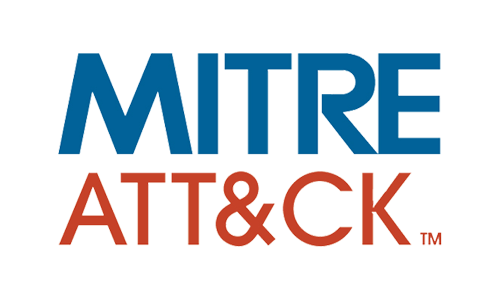In today’s interconnected world, remote work has become a norm for many professionals. While it offers numerous benefits such as flexibility and improved work-life balance, it also comes with its share of risks. Securing your home office environment is not just a technical necessity; it’s a crucial aspect of maintaining the integrity and confidentiality of your work.
Working from home exposes both individuals and organizations to a variety of cyber threats. These include phishing attacks, unsecured networks, malware, and unauthorized access to sensitive data. Understanding these potential threats and implementing robust security measures are essential to protect both personal and professional information.
Following the guidelines in this article, whether you’re a non-techy user in marketing, legal, human resources, or finance, or a tech-savvy professional working as a SOC analyst, system administrator, or help desk support, will better equip you to safeguard your remote workspace against cyber threats.
Resources
Cybersecurity for Beginners – Raef Meeuwisse
The Fifth Domain: Defending Our Country, Our Companies, and Ourselves in the Age of Cyber Threats – Richard A. Clarke and Robert K. Knake
How Cybersecurity Really Works: A Hands-On Guide for Total Beginners – Sam Grubb
Cybersecurity for Small Networks: A Guide for the Reasonably Paranoid
TL:DR – General Guidelines
Basic Online Safety Practices
- Use Strong Passwords: Create complex passwords combining upper and lower case letters, numbers, and symbols. Avoid using easily guessable information like birthdays or common words. Tools like password managers can help keep track of them.
- Enable Two-Factor Authentication (2FA): Whenever possible, enable 2FA on your accounts to add an extra layer of security beyond just your password.
- Be Cautious with Links and Attachments: Always verify the source before clicking on links or opening attachments in emails or messages. Phishing scams often disguise as legitimate sources to steal your information.
- Keep Software Updated: Ensure your operating system, software, and apps are updated regularly. Updates often include crucial security patches to protect against vulnerabilities.
- Install and Update Antivirus Software: Protect your devices from malware and viruses by installing reputable antivirus software and keeping it updated.
- Be Mindful of Public Wi-Fi: Avoid accessing sensitive information or conducting financial transactions over public Wi-Fi networks. If necessary, use a Virtual Private Network (VPN) for secure connections.
Secure Home Network Setup
- Change Default Router Settings: Default usernames and passwords for routers are widely known and can be easily exploited. Change these settings to something more secure.
- Enable WPA3 Encryption: Use the latest Wi-Fi security standard, WPA3, to encrypt your wireless network. This provides stronger protection compared to older standards like WPA2.
- Create a Separate Network for Guests: Set up a guest network to keep your primary network secure. This prevents guests from accessing your main network and its connected devices.
- Use Strong Network Passwords: Just like your other passwords, make sure your Wi-Fi password is strong and not easily guessable.
- Regularly Update Router Firmware: Keep your router’s firmware up-to-date to benefit from the latest security features and patches.
- Disable Remote Management: Unless absolutely necessary, disable remote management features on your router to prevent unauthorized access.
Guidance for All Who Kept Reading
You are the Security Champions Your Company Needs
Simple Steps to Secure Your Devices
Update Your Software: Regularly update your operating system and applications. These updates often include security patches that protect you from known vulnerabilities.
Use Strong Passwords: Create strong, unique passwords for all your accounts. Avoid common words or easily guessable information. Consider using a password manager to keep track of them.
Enable Two-Factor Authentication (2FA): Use 2FA for an additional layer of security on your accounts. This ensures that even if your password is compromised, access requires a second form of verification.
Install Antivirus Software: Protect your devices from malware and viruses by installing reputable antivirus software and keeping it updated.
Safe Practices for Online Communication and File Sharing
Verify Links and Attachments: Be cautious with emails and messages containing links or attachments, especially from unknown sources. Verify the sender before clicking on anything.
Use Secure Communication Tools: Opt for encrypted communication tools for sensitive conversations. Apps like Signal or WhatsApp offer end-to-end encryption.
Share Files Securely: Use secure file-sharing services with encryption. Services like OneDrive or Google Drive offer secure sharing options. Avoid sharing sensitive information over unsecured channels.
Protecting Sensitive Information and Understanding Phishing Scams
Recognize Phishing Attempts: Be vigilant about emails and messages asking for personal information. Common signs of phishing include generic greetings, urgent language, and suspicious links. Legitimate companies will never ask for sensitive information via email.
Use Encryption: Whenever possible, encrypt sensitive information before sharing it. This adds a layer of protection in case the data is intercepted.
Monitor Your Accounts: Regularly check your bank and credit card statements for unauthorized transactions. Set up alerts for suspicious activity.
Advanced Network Security Measures (For Tech Users)
Use VPNs: Ensure that all remote workers connect through a robust Virtual Private Network (VPN) to encrypt internet traffic and maintain privacy. VPNs help secure data in transit and protect against man-in-the-middle attacks.
Implement Firewalls: Configure and manage firewalls to monitor incoming and outgoing traffic, preventing unauthorized access to your network. Use both network firewalls and host-based firewalls for comprehensive protection.
Zero Trust Architecture: Adopt a Zero Trust model, assuming that no user or device is trustworthy by default. Continuously verify the identity and integrity of users and devices before granting access to resources.
Monitoring and Managing Access Controls (For Tech Users)
Role-Based Access Control (RBAC): Implement RBAC to ensure that users have the minimum level of access required for their roles. Regularly review and update access permissions to prevent privilege creep.
Multi-Factor Authentication (MFA): Enforce MFA for all users, especially for accessing critical systems and data. MFA adds an extra layer of security by requiring additional verification methods beyond just passwords.
Activity Monitoring: Use tools to continuously monitor network and user activity. Implement security information and event management (SIEM) systems to detect and respond to unusual patterns or potential security incidents.
Incident Response Planning and Best Practices for Remote Security (For Tech Users)
Develop an Incident Response Plan: Create and maintain a detailed incident response plan outlining the steps to take in the event of a security breach. Ensure all team members are familiar with their roles and responsibilities during an incident.
Conduct Regular Security Training: Educate employees on the latest security threats and best practices. Regular training helps keep everyone informed and aware of potential risks.
Simulate Attack Scenarios: Periodically run simulations of different attack scenarios to test the effectiveness of your security measures and incident response plan. Use these exercises to identify and address any weaknesses in your approach.
Data Backup and Recovery: Implement a robust data backup strategy to ensure that critical data can be recovered in the event of a ransomware attack or other data loss incident. Regularly test your backup systems to verify their effectiveness.
Patch Management: Ensure that all software, including operating systems and applications, is regularly updated with the latest security patches. Use automated tools to streamline the patch management process.
Common Tools and Software Recommendations
Third Party Breaches and Security Incidents Happen, So Do Your Research. (See ‘Real-Life Case Studies’)
Suggested Security Software for Different User Groups
For Non-Techy Users (PR, Legal, HE, Finance):
Antivirus Programs: Norton, McAfee, Bitdefender
Password Managers: LastPass, 1Password, Bitwarden
VPN Services: NordVPN, ExpressVPN, CyberGhost
For Techy Users (SOC Analysts, System Administrators, Help Desk):
Endpoint Security Solutions: CrowdStrike Falcon, Symantec Endpoint Protection, ESET Endpoint Security
Network Security Tools: Palo Alto Networks, Fortinet FortiGate, Cisco ASA
Advanced Threat Protection: FireEye, Check Point SandBlast, Trend Micro Deep Security
Recommended Tools for Secure Communication and Collaboration
Secure Communication Apps:
For All Users: Signal, WhatsApp (with end-to-end encryption), Microsoft Teams (with advanced security features)
For Tech Users: Slack (Enterprise Grid for enhanced security), Mattermost (self-hosted for complete control)
Collaboration Platforms:
For All Users: Microsoft 365 (with built-in security features), Google Workspace (with security controls)
For Tech Users: Atlassian Confluence (for secure document collaboration), GitHub (for secure code collaboration and version control)
File Sharing Services:
For All Users: OneDrive, Google Drive, Dropbox (with advanced security features)
For Tech Users: SharePoint (for controlled access and document management), Box (with advanced security and compliance features)
Real-Life Case Studies
Examples of Security Breaches and Their Consequences
Target Data Breach (2013)
Incident: Hackers gained access to Target’s network using credentials stolen from a third-party vendor. This led to the compromise of over 40 million credit and debit card accounts.
Consequences: Target faced significant financial losses, legal repercussions, and damage to its reputation. The breach also led to a re-evaluation of cybersecurity practices across the retail sector.
Equifax Data Breach (2017)
Incident: A vulnerability in Equifax’s web application allowed hackers to access sensitive personal data, including Social Security numbers, of approximately 147 million people.
Consequences: The breach resulted in severe reputational damage, legal penalties, and a loss of consumer trust. Equifax had to invest heavily in security improvements and face ongoing scrutiny from regulators.
Zoom Video Conferencing Breach (2020)
Incident: During the surge in remote work, Zoom faced multiple security challenges, including “Zoom bombing” incidents where uninvited guests disrupted meetings.
Consequences: Zoom implemented rapid security updates and added new features to enhance user protection. The incidents highlighted the importance of securing communication platforms, especially during increased usage periods.
Lessons Learned and Best Practices from Successful Implementations
Adopting a Zero Trust Model
Case: Google’s BeyondCorp initiative
Lesson: By adopting a Zero Trust architecture, Google shifted security to focus on users and devices rather than network boundaries. This approach provided better control and visibility over access requests, reducing the risk of unauthorized access.
Comprehensive Incident Response Planning
Case: Microsoft’s approach to cybersecurity
Lesson: Microsoft emphasizes a comprehensive incident response plan, including regular training, simulations, and a clear communication strategy. This proactive approach helps in quickly identifying and mitigating threats, minimizing potential damage.
Continuous Security Training and Awareness
Case: IBM’s Cybersecurity Awareness Program
Lesson: IBM’s program focuses on continuous security education for employees, covering the latest threats and best practices. Regular training sessions and awareness campaigns help create a culture of security consciousness, reducing the likelihood of human error leading to breaches.
In today’s era of widespread remote work, maintaining a secure home office is more critical than ever. Throughout this article, we’ve covered essential security tips for both non-techy and techy users, emphasizing the importance of strong passwords, software updates, secure communication tools, and advanced network security measures.
We’ve highlighted the distinct needs of different user groups—whether you’re in Marketing, legal, human resources, finance, the SOC, system administration, or help desk support. Everyone has a role to play in safeguarding their work environment against cyber threats. Real-life case studies have shown us the severe consequences of security breaches and the successful strategies that can help prevent them.
By staying informed, implementing best practices, and regularly updating your knowledge, you can create a secure remote workspace. Remember, security is an ongoing process that requires vigilance and adaptability. Stay proactive, stay safe, and keep your digital environment protected.




